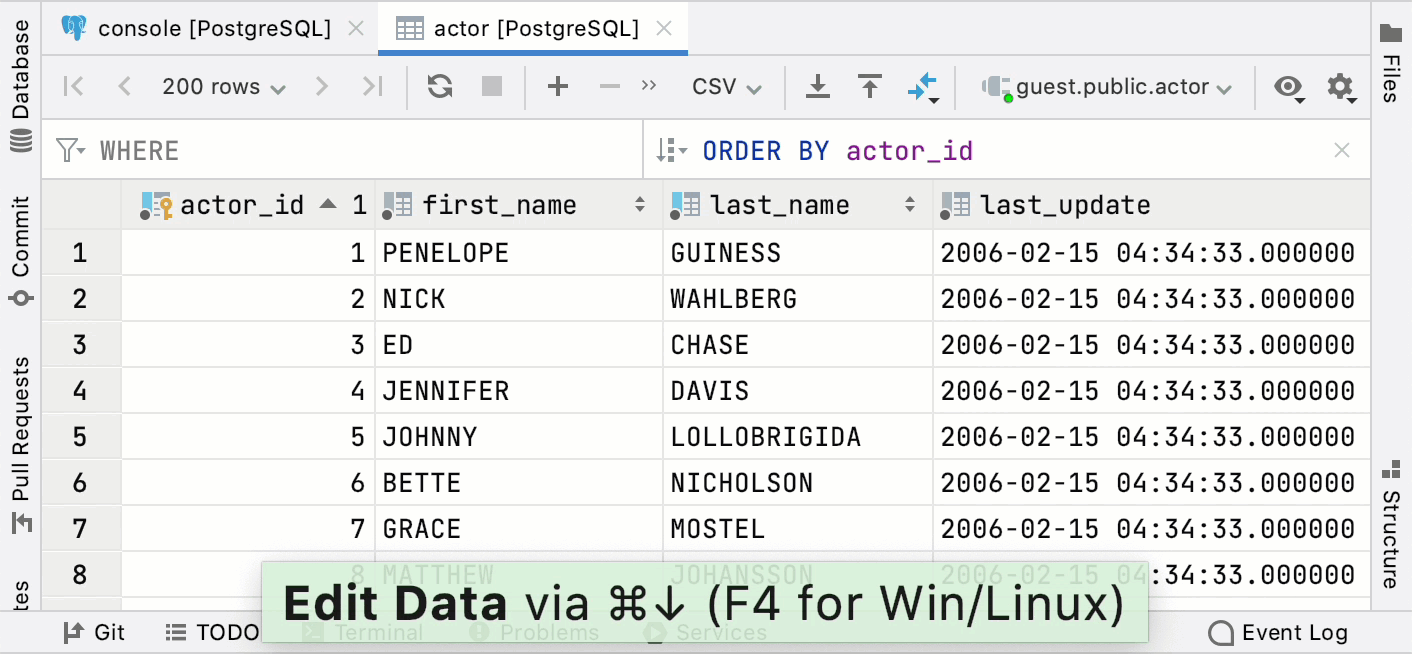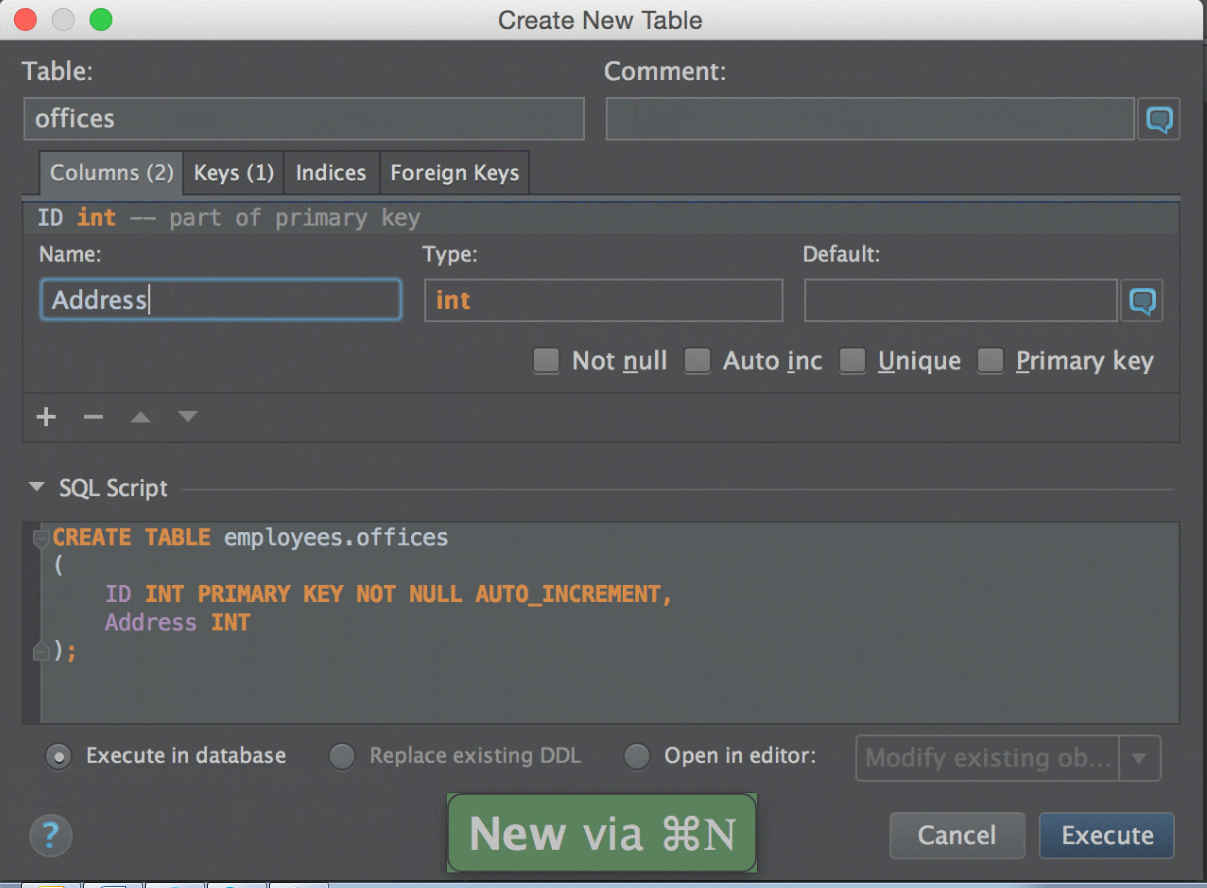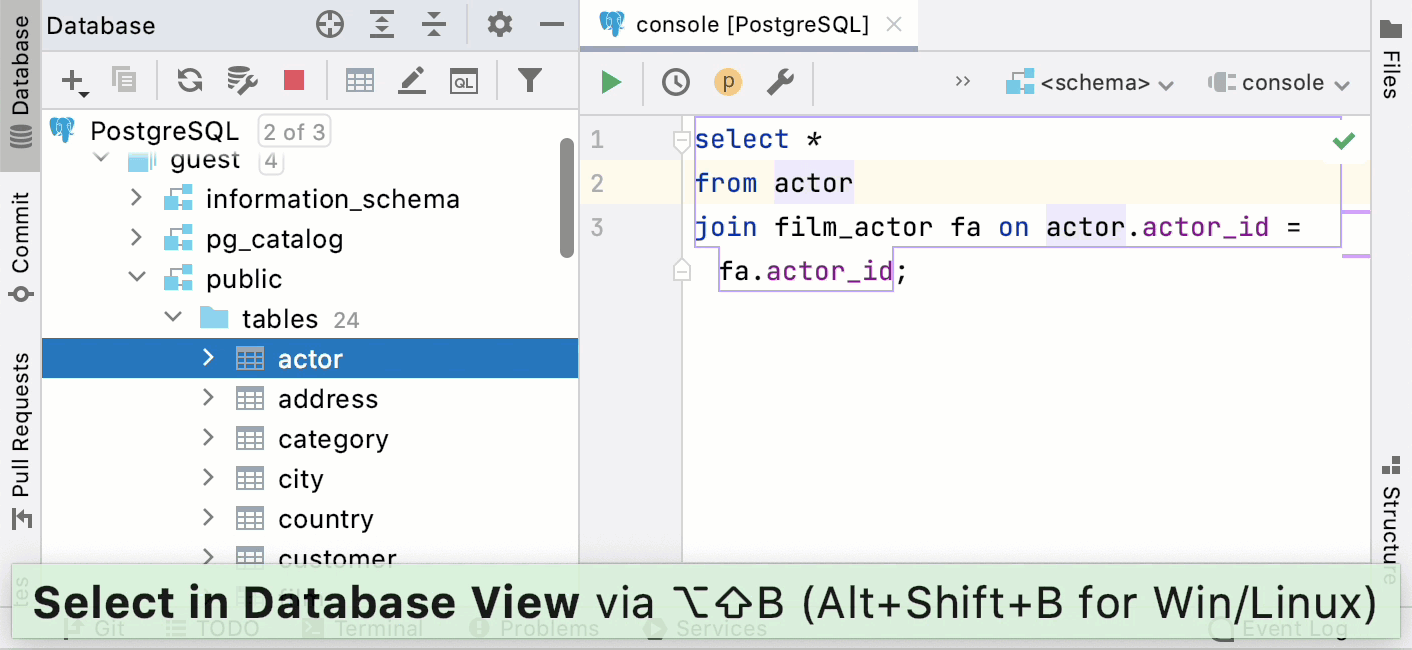

Moreover, you can create different implementations for different SQL dialects, so a template abbreviation will paste a different query depending on which database you are working on. You can invoke this template in any context you define. For example, our query that shows the staff list has the abbreviation ‘slist’: Here is how they work:īut there is nothing to stop you from putting any query into your template! Every live template has its own abbreviation – just type it and press Tab to paste the code. They include a mechanism for variables, so your template can be more generic than the query you are going to run.
Datagrip shortcuts code#
Generally, live templates are created for situations where you just need to use a small code snippet. While we don’t have a feature specifically named query book, we believe there are approaches you can take with DataGrip that cover the majority of these needs: live templates run configurations one file with all queries separate query files. There’s an issue for this feature in our DataGrip issue tracker. I want to store them and to be able to call any of them when I want. To print a non-default or customized keymap, use the Keymap exporter plugin.– Do you have a query book? I have numerous queries I run time after time. This cheat sheet is also available under Help | Keyboard Shortcuts PDF. If you are using one of the predefined keymaps, you can print the default keymap reference card and keep it on your desk to consult it if necessary. It also suggests creating a shortcut for commands that are executed frequently. Key Promoter X is a plugin that shows a popup notification with the corresponding keyboard shortcut whenever a command is executed using the mouse.

To add or change the shortcut for any action, press Alt+Enter when it is selected in the list. Then select the necessary action and press Enter to execute it. Press Ctrl+Shift+A and start typing to get a list of suggested actions. Learn shortcuts as you workĭataGrip provides several possibilities to learn shortcuts:įind Action lets you search for commands and settings across all menus and tools.
Datagrip shortcuts install#
Find this keymap as a plugin and install it on the Plugins page as described in Plugins. If your keymap stopped working after an update, it is likely that the keymap is not available by default in the new version of DataGrip. If you have a customized keymap that you are used to, you can transfer it to your installation. You can modify a copy of any predefined keymap to assign your own shortcuts for commands that you use frequently. Install a keymap from a pluginīesides the default set of keymaps, you can install keymaps from plugins (such as, keymaps for GNOME and KDE): open the Settings dialog Ctrl+Alt+S, select Plugins, switch to the Marketplace tab and search for keymap. When consulting this page and other pages in DataGrip documentation, you can see keyboard shortcuts for the keymap that you use in the IDE - choose it using the selector at the top of a page. Make sure that it matches the OS you are using or select the one that matches shortcuts from another IDE or editor you are used to (for example, Eclipse or NetBeans). Use a predefined keymapĭataGrip automatically suggests a predefined keymap based on your environment. To view the keymap configuration, open the Settings dialog Ctrl+Alt+S and select Keymap.Įnable function keys and check for possible conflicts with global OS shortcuts. You can change the selected behavior in Settings | Keymap. (For Windows) Starting from 2019.2, when you use Ctrl+Y for the first time, you will see a dialog in which you can assign the shortcut to the Delete Line or the Redo action.

(For Windows) Delete a line or redo (customizable). Show all places where a code element is used across your project. Increase or decrease the scope of selection according to specific code constructs. Select a recently opened file from the list. Jump to the next or previous highlighted error. Quick-fixes for highlighted errors and warnings, intention actions for improving and optimizing your code. Quickly find any file, action, class, symbol, tool window, or setting in DataGrip, in your project, and in the current Git repository.įind a command and execute it, open a tool window, or search for a setting. Navigate to the object in the Database Explorer. For example, if you press this shortcut on a table's name in the SELECT statement, you will see the contents of the table. For example, if you press this shortcut on a table's name in the SELECT statement, you will see the DDL of this table (the CREATE TABLE statement).


 0 kommentar(er)
0 kommentar(er)
